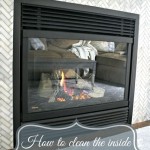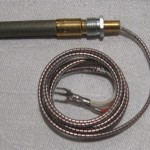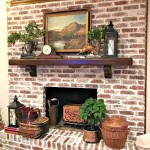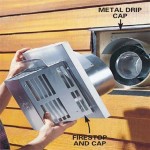In-Home Fireplace Safety: Protecting Yourself and Your Home
Fireplaces, with their warm glow and cozy ambiance, add a touch of charm and comfort to many homes. However, these inviting features can also pose potential fire hazards if not handled with proper safety precautions. A safe and enjoyable fireplace experience requires a combination of preventative measures, regular maintenance, and responsible use. This article will delve into the essential aspects of in-home fireplace safety, providing practical guidance for creating a secure environment for you and your family.
1. Fireplace Installation and Maintenance
A properly installed and maintained fireplace is the cornerstone of safety. The National Fire Protection Association (NFPA) estimates that approximately 7,300 home fires are attributed to fireplaces, chimneys, and vents each year. It is crucial to ensure that your fireplace adheres to all local building codes and is inspected annually by a qualified professional.
Here are some key aspects of installation and maintenance:
- Chimney Inspection: A professional chimney sweep should inspect your fireplace and chimney annually. This includes checking for cracks, blockages, and creosote buildup. Creosote is a highly flammable substance that accumulates over time and can ignite easily. A clean chimney ensures proper airflow and reduces the risk of chimney fires.
- Fireplace Damper: The damper, a metal plate that controls airflow from the fireplace to the chimney, should be properly sealed when the fireplace is not in use. This prevents drafts, smoke, and carbon monoxide from entering the home.
- Fireplace Screen: A sturdy fireplace screen is essential to prevent sparks and embers from flying out of the fireplace and igniting nearby objects. Choose a screen that extends beyond the edges of the fireplace opening for maximum protection.
- Fireplace Surround: The materials surrounding the fireplace should be fire-resistant. Avoid placing flammable materials such as rugs, curtains, or furniture near the fireplace.
2. Safe Fireplace Operation
Even with a properly installed and well-maintained fireplace, safe operation is essential.
Here are some crucial safety practices:
- Fireplace Fuel: Only use seasoned hardwood or treated fireplace logs in your fireplace. Avoid using softwoods, treated wood, or paper as they produce excessive smoke and creosote. Never use lighter fluid to start a fire; opt for a fireplace lighter or matches specifically designed for fireplace use.
- Fireplace Tools: Maintain a fire extinguisher readily accessible near the fireplace. Keep a sturdy poker, shovel, and tongs for handling logs and controlling the fire.
- Fireplace Supervision: Never leave a fire unattended. Children and pets should be supervised at all times to prevent accidents and injuries.
- Fireplace Extinguishing: Before leaving the house or going to bed, ensure the fire is completely extinguished. Use a poker or shovel to spread the ashes and ensure all embers have been extinguished.
3. Carbon Monoxide Safety
Carbon monoxide (CO) is an odorless, colorless gas that can be deadly. Incomplete combustion in a fireplace can release CO into the home, which can lead to poisoning. Symptoms of CO poisoning include headaches, dizziness, nausea, and fatigue.
Here are some important CO safety tips:
- CO Detector: Install a carbon monoxide detector near the fireplace and on each floor of your home. CO detectors should be tested monthly and replaced according to the manufacturer's recommendations.
- Ventilation: Ensure your fireplace has ample ventilation. Open a window or door when using the fireplace to allow fresh air to circulate.
- Professional Inspection: Schedule regular inspections of your fireplace and chimney to check for any leaks or blockages that could hinder ventilation and potentially lead to carbon monoxide buildup.
By adhering to these essential fireplace safety guidelines, you can create a safe and comfortable environment for yourself and your loved ones. Regular inspections, preventative measures, and responsible operation are crucial to minimizing fire hazards and ensuring a warm and inviting fireplace experience.

Chimney Safety Week Fireplace Cricket Philly Mainline

5 Tips To Use Your Fireplace Safely This Winter Oklahoma Personal Iury Lawyers

Aap Offers Fireplace Safety Tips Newsymom

Use Your Fireplace Safely Fire Line

6 Essential Gas Fireplace Safety Tips Croft

Fireplace Safety Maintenance Travelers Insurance

Safety Around Fireplaces Ieuter Insurance Group In Midland Michigan

Fireplace Safety Tips 101 Brick Anew Blog

Fireplace Safety Tips Infographic Old World Stoneworks

Chimney Safety Tips Casualty
Related Posts








